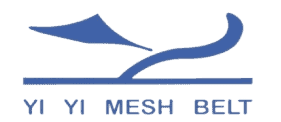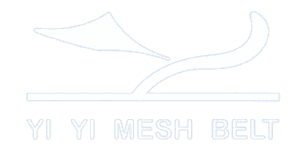In today’s industrial processes, efficient material handling is vital for the smooth operation of various production lines. Chain driven wire mesh metal conveyors play a crucial role in moving heavy loads and ensuring seamless production workflows. Choosing the right chain type and model is essential for optimal performance and longevity of these conveyors. In this article, we will explore the different chain types and models available for chain driven wire mesh metal conveying production, and highlight the factors to consider when selecting the ideal chain.

Introduction
Chain driven wire mesh metal conveyors are widely used in industries such as automotive, food processing, and manufacturing, where the transportation of heavy products or components is necessary. These conveyors consist of a mesh belt supported by chains, which drive the belt forward, facilitating the movement of goods along the production line.
Understanding Chain Driven Wire Mesh Metal Conveying
What is Chain Driven Wire Mesh Metal Conveying?
Chain driven wire mesh metal conveying is a method of material handling where a mesh belt is propelled by chains to transport items in a manufacturing or processing environment. The chains engage with the mesh belt, providing the necessary power to move the conveyed materials from one point to another. This conveyor system offers reliability, flexibility, and precise control over the movement of goods.
Importance of Chains in the Process
Chains are integral to the functioning of chain driven wire mesh metal conveyors. They not only drive the movement of the mesh belt but also ensure stability and prevent slippage. The selection of the right chain type and model is critical to ensure optimal performance, durability, and efficiency of the conveyor system.
Types of Chains for Chain Driven Wire Mesh Metal Conveying
There are several types of chains available for chain driven wire mesh metal conveying, each with its unique characteristics and advantages. Let’s explore some common chain types:
Roller Chains
Roller chains are the most commonly used chains in industrial applications. They consist of metal links connected by rollers, allowing smooth movement over sprockets. Roller chains are known for their high load capacity, durability, and resistance to wear and tear. They are suitable for heavy-duty conveying operations.
Engineering Steel Chains
Engineering steel chains are designed to withstand harsh environments and heavy loads. They are made from hardened steel and offer excellent resistance to corrosion, abrasion, and high temperatures. These chains are often used in industries where extreme conditions are present, such as foundries and heat treatment facilities.
Flat-Top Chains
Flat-top chains are characterized by their flat, smooth surface, which provides a stable platform for transporting delicate or irregularly shaped products. These chains are ideal for conveying items that require extra support or those that might get damaged by other types of chains. Flat-top chains are commonly used in the food and beverage industry.
Plastic Chains
Plastic chains are lightweight, corrosion-resistant, and offer excellent flexibility. They are suitable for applications where low-noise operation, easy maintenance, and hygiene are essential. Plastic chains are often used in the pharmaceutical, packaging, and electronics industries.
Factors to Consider When Choosing Chains for Chain Driven Wire Mesh Metal Conveying
When selecting chains for chain driven wire mesh metal conveying, several factors should be taken into consideration to ensure optimal performance and longevity. These factors include:
Load Capacity
The chain’s load capacity should align with the weight of the conveyed materials. It is crucial to choose a chain that can handle the maximum load without stretching or breaking. Overloading the chain can lead to costly downtimes and potential damage to the conveyor system.
Speed and Efficiency
The speed at which the conveyor operates and the desired production efficiency should also influence the chain selection process. Certain chains are designed to handle higher speeds and offer smoother operation, resulting in increased productivity and reduced cycle times.
Corrosion Resistance
In environments where corrosive substances or high humidity levels are present, choosing chains with excellent corrosion resistance is essential. Corroded chains can lead to performance issues and compromise the integrity of the entire conveyor system.
Maintenance and Lubrication
Consider the maintenance requirements of the chain type and model. Some chains require regular lubrication to minimize friction and prevent wear, while others may be self-lubricating or low-maintenance. Assessing the maintenance needs helps in planning preventive maintenance schedules and optimizing the overall system reliability.

Popular Chain Models for Chain Driven Wire Mesh Metal Conveying
Several chain models have been developed specifically for chain driven wire mesh metal conveying applications. Let’s explore some popular chain models and their key features:
Model A: High-Strength Roller Chain
Model A is a high-strength roller chain designed to handle heavy loads and withstand demanding environments. It offers exceptional durability and wear resistance, making it suitable for applications where extended service life is required. This chain model is often used in industries such as automotive, mining, and steel manufacturing.
Model B: Stainless Steel Chain
Model B is a stainless steel chain known for its corrosion resistance and hygienic properties. It is commonly used in industries where cleanliness and compliance with strict hygiene standards are crucial, such as pharmaceuticals, food processing, and electronics. This chain model is resistant to chemicals, moisture, and high temperatures, ensuring optimal performance in challenging environments.
Model C: Modular Plastic Chain
Model C is a modular plastic chain that combines durability with flexibility. It offers easy assembly and maintenance, making it a cost-effective solution for various conveying applications. This chain model is lightweight, low-noise, and resistant to impact, making it suitable for industries like packaging, automotive, and electronics.

Benefits of Using the Right Chain for Chain Driven Wire Mesh Metal Conveying
Using the right chain type and model for chain driven wire mesh metal conveying production provides several benefits, including:
Improved Reliability and Durability
The right chain ensures reliable and durable operation, reducing the risk of unexpected breakdowns and production interruptions. It can withstand the demanding conditions of the conveying process, resulting in increased uptime and productivity.
Enhanced Conveyor Performance
By selecting the appropriate chain, the conveyor system can operate at optimal performance levels. The right chain reduces friction, minimizes wear, and ensures smooth and efficient movement of materials. This leads to improved product quality and reduced waste.
Reduced Downtime and Maintenance Costs
Choosing a chain that requires minimal maintenance and lubrication can significantly reduce downtime and maintenance costs. With proper chain selection, the need for frequent replacements and repairs is minimized, resulting in cost savings and increased overall equipment effectiveness.

How to Select the Ideal Chain Type and Model
Selecting the ideal chain type and model for chain driven wire mesh metal conveying requires careful consideration of several factors. Here are some steps to guide you through the selection process:
Assessing Application Requirements
Evaluate the specific requirements of your application, including load capacity, speed, environment, and product characteristics. Understanding these factors will help determine the type of chain and model that best suits your needs.
Consulting with Experts and Manufacturers
Seek advice from experts and chain manufacturers who specialize in conveyor systems. They can provide valuable insights and recommend suitable chain types and models based on your application requirements.
Evaluating Cost-Effectiveness
Consider the initial investment cost, maintenance requirements, and expected lifespan of the chain type and model. Choosing a cost-effective solution involves finding the right balance between performance, durability, and affordability.

Conclusion
Selecting the appropriate chain type and model is crucial for the successful operation of chain driven wire mesh metal conveyors. Roller chains, engineering steel chains, flat-top chains, and plastic chains are among the options available, each offering unique advantages for specific applications. By considering factors such as load capacity, speed, corrosion resistance, and maintenance requirements, you can ensure optimal performance, durability, and efficiency of your conveyor system. Consultation with experts and manufacturers can provide further guidance in choosing the right chain for your needs.

FAQs
1.What is the maximum load capacity of a chain-driven wire mesh conveyor?
The maximum load capacity of a chain-driven wire mesh conveyor depends on the specific chain type and model being used. Different chains have different load-bearing capacities, and it’s essential to choose a chain that can handle the expected maximum load of your application.
2.Can plastic chains be used for heavy-duty applications?
While plastic chains are lightweight and offer flexibility, they may not be suitable for extremely heavy-duty applications. It’s important to consider the load capacity and the specific requirements of your application when selecting a chain type. In some cases, alternative chain types such as roller chains or engineering steel chains may be more appropriate.
3.How often should chains be lubricated in a chain-driven conveyor?
The lubrication frequency for chains in a chain-driven conveyor depends on various factors such as the chain type, operating conditions, and manufacturer’s recommendations. It’s generally advisable to follow the manufacturer’s guidelines regarding lubrication intervals to ensure optimal chain performance and longevity.
4.Are there any specific safety considerations when using chain-driven conveyors?
Yes, safety is crucial when operating chain-driven conveyors. It’s important to ensure that all safety guards and devices are in place to prevent accidents and injuries. Regular inspections, maintenance, and employee training on safe operating procedures are essential to maintain a safe working environment.
5.Can different chain types and models be combined in a single conveyor system?
Yes, it is possible to combine different chain types and models in a single conveyor system, depending on the specific requirements of the application. However, it’s important to ensure compatibility and proper alignment of the chains to maintain smooth operation and avoid any issues with the conveyor system.



